Eggplants or "Cell" loved many mistresses. From this vegetable you can cook a lot of delicious and useful dishes. It is well combined eggplants with vegetables and meat, they can be salted, break or make a delicious caviar. Many delicious dishes are prepared from the shiny, but first you need to learn how to grow this delicious vegetable, and this is not the easy task.
Despite the fact that eggplants belong to the family of the Parotnic, they are very difficult to grow. Dachnips have to make a lot of effort to collect a decent harvest of vegetables. When growing blue, it is important to take into account all, ranging from the soil temperature when landing, the composition of the soil, watering and even control the air temperature and much more and much more. For example, 80% of success depends on how correctly eggplants were planted.
Before studying the study of the Eggplant Landing Rules, first let's find out, next to what crops can be planted. The so-called predecessors (garden crops, which were grown last year at the landing site of eggplant) are of great importance. So, for example, it is forbidden to plant eggplant seedlings to the place where last year you grown tomatoes and peppers. But if you put eggplants this year to a new place, but next door to these cultures, then the vegetable will feel great.
Ideal predecessors for eggplant, it is carrots, fringe crops, legumes (soy, asparagus, beans), onions and cucumbers. If you have grown early cabbage, after processing the site at this location you can plant eggplants, just this garden culture in a new place will feel good.
It is also important to take into account when choosing a place and the fact that if this year you managed to collect a good crop of centers, then the next year it is impossible to plant seedlings at your previous place. It is allowed to repeat in the choice of a site for planting eggplant only after 3 years.
We prepare soil
How to plant eggplants in open ground? Many dackets are often wondering how naughty culture can be. And no accident, since the seedlings of the eggplant is very gentle and at the lowest negligence it is possible to ruin another rapid plant. In addition, it is necessary to know that it is best to grow eggplant seedlings, and then, abiding care, carefully transplant the culture for a permanent place.
If everything is clear with the predecessors, now it's time to choose a good place. It should be an open bed, protected from drafts and wind, while it should be located on a well-lit place and be released from weed grass. Remember that the perfect soil for growing eggplant is a sandy mixture or loam. If your land in the country area is not quite suitable for growing eggplant, you can approach the standards and enrich the soil in this way:
- if the soil is peat, add humus and ferrous land into the ground;
- for heavy soil, humus with peat, which should be made only in the fall at Popile;
- for sandy soil, peat with wood sawdust is suitable.
Observing these recommendations, do not forget that with the onset of autumn in advance the chosen place for planting eggplant must be precurable by manure. For this, a part of the manure is made at Popile, and with the onset of spring, you can add a little overwhelmed manure to the ground to enrich the earth. It is important to take exceptionally reworked manure, otherwise you will observe the active growth of green mass, and the fruits will be very small or will not appear at all.
Eggplants need to be treated only by the "ever" method, that is, the Eggplant seedlings grown at home. The fact is that for sowing seeds climate in most of Russia will be destructive, so it is important to prepare in advance seedlings.
How to plant eggplant seeds at seedlings
First of all, we will learn how to choose the boarding material correctly, if you have already decided with the variety of eggplants, it remains to buy good seeds.
Seed selection rules:
- High-yielding grade eggplant still does not mean that it will be. When it comes to practice, it turns out everything differently. If you chose a high-yielding grade of seeds, then prepare to ensure all the conditions for a normal seedlings. We recommend paying attention to low-yields of shiny, they are unpretentious and can even please rich harvest.
- Choose a hardy grade eggplant, which will be resistant to tolerate all nature whims: heat, drought and heavy rains. Remember that the more useful qualities of the grooved gloomy culture you have chosen, the more difficult the seeds to adapt to the climate, it turns out that the grade will not be so hardly.
- Storage time. Specialists have their own concepts of "the healing" of a certain variety of eggplant. So, some vegetables will be stored for a long time, and others need to immediately use, and the taste of eggplants may differ.
- Before buying seeds, you need to decide on the seeding time. In a notebook, make a place for seeding seed when you can plant eggplants and what success you have achieved. This will help avoid unnecessary expenses for the next year and take into account all the errors.
- What to buy seeds? If you just want to grow eggplants on your site, then buy a landing material with a mark "F1" (hybrid seeds), and if you want to stock up and seeds after harvesting, then you need to take a popular grade eggplant.
- We buy treated seeds. As a rule, they are closed in a special shell or "planted" on the ribbon. Which planting material to choose - decide on your own.
- We pay more attention to the landing material of imported production: we study the country of the manufacturer, the company, the shelf life, labeling. Do not forget to watch the landing time, it is very important.
In your hands, you hold a few bags with seeds, it's time to go to landing eggplants. But first you need to process the planting material. To do this, take a stack of water, add a 3 cube of hydrogen peroxide to it (we recruit the liquid with a syringe) and put the mixture on a slow fire. As soon as you feel that water becomes hot, but your fingers still withstand this temperature, it's time to remove the liquid and immediately put in a bowl with a disinfecting composition of eggplant seeds for 10 minutes. Such processing must be performed immediately before sowing seeds.
Turning time can be calculated independently, since there will be no clear instructions. It depends on the climatic conditions in which you will grown eggplants. The duration of the Eggplant Vegetation period is 100-150 days, plus the age of seedlings from 45 to 60 days, excluding the time for germination of seeds (about 10-15 days leave for it), plus the plant grade, harvest fees (within the limits permissible). Based on this, you can independently decide on the sowing date of seeds.
We prepare the landing container - it can be boxes for growing seedlings or individual cups. The soil can be taken from the garden if you have a good chernozem, buy a special soil, add some sand. Good results are obtained if we put vermiculite vermiculite.
How to sow seeds:
- Capacity fill in the soil, water so that the earth is wet.
- Well, if you moisture the soil with miserable water, and it's best to put a thin layer of snow on top of the ground, just cold boot plants. Such hardware procedures can be performed only with seeds that have not had time to germinate. If you land the seeds with barely crushed spheres, then the soil should be warm.
- In each cup or in the container, we put 1 seed in the container if you have a box for growing seedlings with cells, then each other should be put in one eggplant seed.
- From above, we spite the seeds with a moistened soil (up to 0.5 cm), cover with glass or dense polyethylene and leave it in a warm place.
- During the germination of eggplant seeds, it is necessary to ensure that the plants have enough light and heat. Optimum temperature in the period of germination of the sowing material +25 oWITH.
- Tip: Do not stand in one box sow seeds of different varieties, as the germination of each culture is different and some can already germinate (the film needs to be removed), and for not yet sprouted seeds it can be destructive.
- Care for seedlings of eggplant, observing all the conditions: temperature mode in the afternoon +17 oWith, at night +14 oC, after 7 days you need to increase the room temperature up to +27 oC maximum daytime and reduce up +14 oWith at rest (at night). Thus, our seedlings will gradually temper.
- Eggplant seedlings need to water the room temperature and it is best to irrigate from the pulverizer so that the seeds are not denied and do not wash. It is undesirable to allow the dryness of the soil, since the plants are very susceptible to the lack of moisture. It is also impossible to pour, since the roots will start racing and the plant will perish. Watering the best accurate plumbing volume (within 24 hours) or use rainwater.
- In order for the plants normally develop, in the cold season of natural lighting is not enough, so we think over it in advance and organize additional lighting of phytolampa or we establish fluorescent lamps. The duration of lighting is 12 hours, from 6 am to 18.00 or from 7.00 to 19.00. Lamps have no closer at a distance than 50 cm to seedlings. If the lighting is not enough, then the plants will be pulled out, and the leaflets are pale. Such seedlings are susceptible to diseases and when landing in the ground may die.
- If you see that plants lack nutrients, you can organize feeding: 10 days after the first germs, if there is a dive - then 2 weeks after it. For the fertilizer of the soil we use phosphoric fertilizers. Undercalinks We introduce into the soil along with water when watering.
If you comply with all the recommendations, after 2-2.5 months from the date of the first germination, you can transplant seedlings to the ground.
How to plant eggplant seedlings
With the onset of heat, namely, with the arrival of summer, you can proceed to planting eggplant seedlings into an open ground. Just when warm weather will remain on the street, and the night will be warm, seedlings will feel great. The fact is that eggplants do not like temperature fluctuations very much, so to land seedlings allocate several days, starting from 5 to 10 June. Seedling by this time is well strengthened and each sprout will grow 6-7 leaves.
Before landing seedlings in the ground, 2-3 days before the disembarkation, you need to pour out the seedlings, and then right before planting again to pour eggplants.
The landing scheme can be different, we suggest familiarizing yourself with the traditional planting of eggplant.
How to plant eggplants:
- We prepare the wells for seedlings at a distance of 50 cm from each other. Between the rows, leave 45 cm.
- If you wish, you can use the nesting diagram when the square of the Earth is taken 60x60 cm and is drawn on the zones - eggplant and 2 peppers are planted in the well. If the distances between the wells are larger (70x70 cm), then you can put in 1 hole in 2 eggplant sprouts.
- It is best for planting to choose an evening clock when the sun is no longer so active.
- Since the leaves and shoots from plants are very, very tender, then it is necessary to extremely carefully handle the seedlings to damage it. To do this, we reveal one secret: you need to knots in the ground (60 cm + 10 cm will remain in the ground) to immediately suspend fragile plants. Prepare in advance support for all eggplants.
- In each prepared hole, add 1 liter or a little more liquid cow.
- We carefully plunge eggplant seedlings to the first leaflets.
- After landing, it is necessary to cover the seedlings of the film (necessarily clean) and pull the arc from the wire (the height of the film from the ground to 1 m).
- If you planted eggplants in mid-May, then the seedlings need to be covered with 2 layers of the film, as the temperature fluctuations, especially at night they can negatively affect the growth of plants.
- You can open the film when the air temperature at night will not fall below the mark +5 0WITH.
- Even in the summer, when growing seedlings, it is important to ensure that the plants do not die from the night cooling. If you are not sure that at night it will be warm, it is better to cover the first time of eggplant for the night with a polyethylene film. Some experienced gardeners are generally recommended at the same time not to remove the film from wire arcs, and only from time to time it is neatly serving the edges facing south or west to ventilate. In this case, you can achieve good results and grow eggplants on your summer cottage.
If you cannot provide plants such care and do not want to cover them with a film, then you can make another protection - from neighboring tall plants. You can plant near or around a rows with eggplant beets, peppers, legumes or leeks.
The first 2 weeks after planting seedlings of eggplant plants will "sit". It seems that they generally stopped in growth. To help eggplants, you can explode the earth so that the roots get more oxygen. Do not forget to water the soil in time and make feeding by spraying with urea solution (1 tbsp on the water bucket). To keep moisture in the soil, it is possible between rows to lay a black polyethylene film.
How to plant eggplant seedlings can be viewed on video:


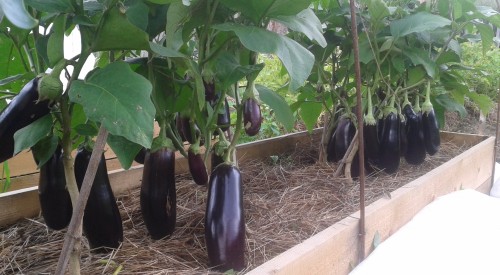
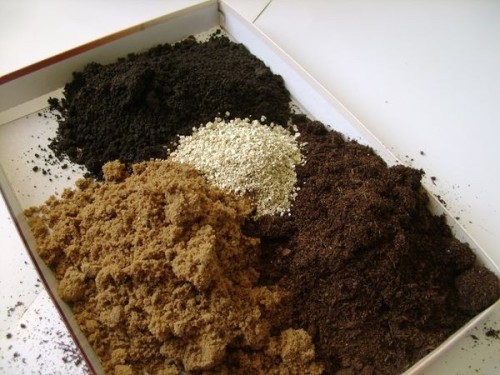
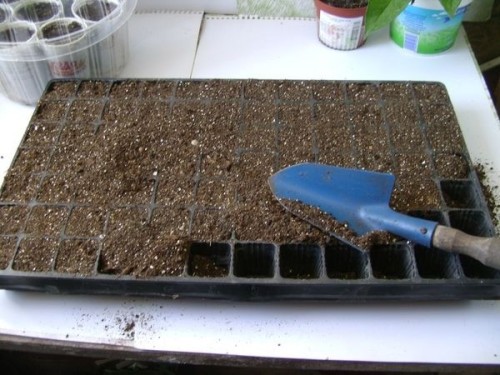
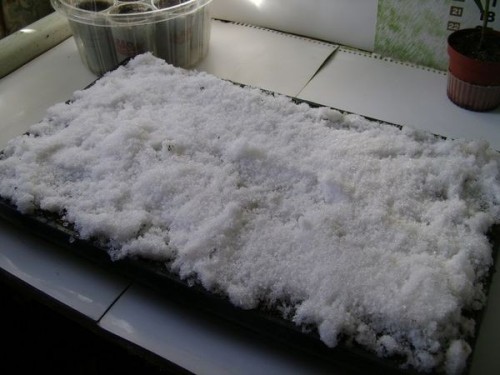
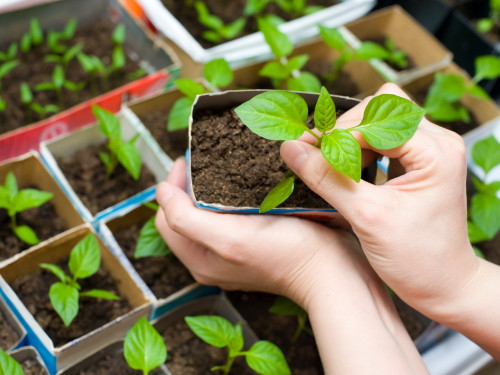
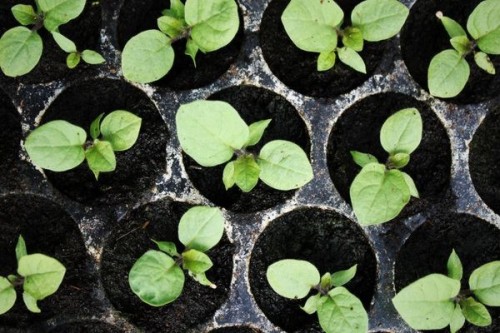












 Start a discussion ...
Start a discussion ...